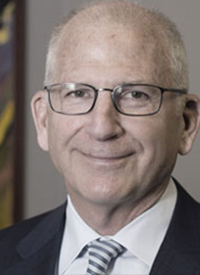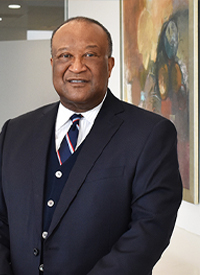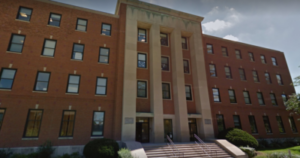William E. English Foundation
 The William E. English Foundation’s mission is to provide rental space at below market rates to non-profit organizations serving the community. Tenants share in the building’s operating costs in proportion to the amount of office space occupied.
The William E. English Foundation’s mission is to provide rental space at below market rates to non-profit organizations serving the community. Tenants share in the building’s operating costs in proportion to the amount of office space occupied.
William E. English Foundation Board

Lorenzo Esters
President
Milton (Milt) O. Thompson, Board President
Bleeke Dillion Crandall Attorneys
Cynthia (Cindy) Simon Skjodt, Board Vice-President
Community Volunteer
Duane Ingram, Board Secretary/Treasurer
RISE Indy
Molly Wilkinson Chavers
Blue Mercury Consulting, LLC
Kathy Davis
Davis Design Group, LLC
Greg Hahn
Bose McKinney Evans, LLP
John David Hoover
Hoover Hull Turner LLP
Lacy Johnson
Taft Stettinius & Hollister LLP
Kameelah Shaheed-Diallo
The City FundWho was William E. English, and what’s so special about the English foundation building?
 William Easton English (b. 1850) grew up the son of a banker and politician in Lexington, Indiana. At 15, he moved to Indianapolis where he would remain until his death in 1926.
William Easton English (b. 1850) grew up the son of a banker and politician in Lexington, Indiana. At 15, he moved to Indianapolis where he would remain until his death in 1926.
Over the course of his eventful life, he would serve as a representative at both the state and federal levels, inherit and run his father’s opera house on Monument Circle, and serve in the Spanish-American War.
But while his political and military contributions may be largely forgotten, and the English Opera House long since demolished, his legacy of generosity and love of Indianapolis is still on display and still benefitting the community.
It can all be found at 615 Alabama Street in the English Foundation Building. Here, a group of non-profits serving Central Indiana fulfills the wishes of the building’s namesake as laid out in his will nearly a century ago:
It is my wish and will that such charities … shall be permitted free of charge and without restriction as to race, creed or color, to have their office headquarters in said building, and to have accommodations for the meeting of their officers and those interested in the management of their affairs, and for the proper transaction of their necessary business.
…[A]nd it is my desire that the poor, the needy and the suffering of the City of Indianapolis shall receive the benefit from this bequest and that said property shall become and forever remain the headquarters of Indianapolis organized charities, and that during the future life of the City of Indianapolis, it shall be the home and center of organized charity work conducted in said city.
His request broke new ground, both locally and nationally.
Significantly, the stipulation that there be no racial restriction was made in defiance of that era’s burgeoning segregationist movement, led by then-Indiana governor and Klan-affiliate, Edward Jackson.
But it was the notion of a committed, rent-free home for charities that would ultimately establish a facility that was the first of its kind in America.
To accomplish this, the Indianapolis Foundation—armed with a lump sum of the English fortune—constructed and opened the present-day Alabama Street building in 1953.
Today, the English Building is still a home for non-profits. Some, like the Indianapolis Foundation, are even its original tenants.
And just as laid out in Mr. English’s will nearly one hundred years ago, each of the building’s occupants is working to make our community a more prosperous and equitable place for all.




